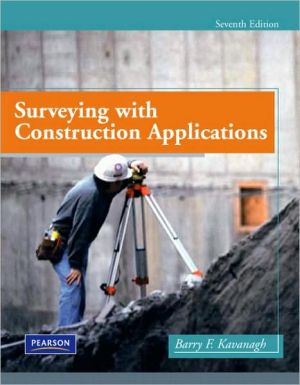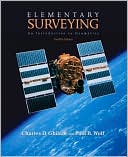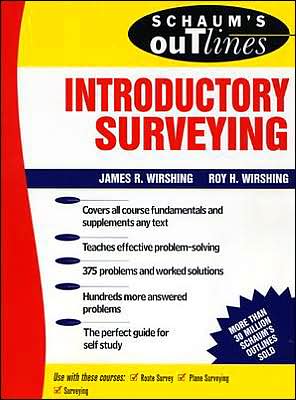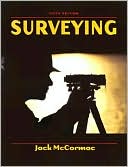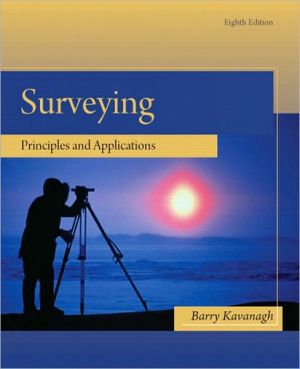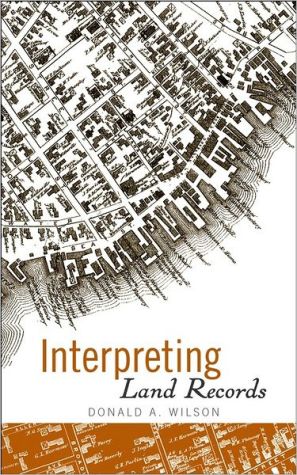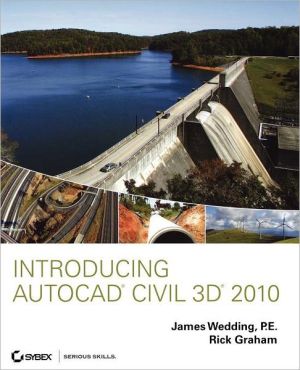Surveying with Construction Applications
Known for its state-of-the-art coverage and clear, concise approach, Surveying with Construction Applications, Seventh Edition covers the latest advances and foundational principles of surveying. Emphasizing instrumentation technology, field data capture, and data-processing techniques, this text highlights real-world applications of surveying to the construction and engineering fields. Ideal as a reference in the field, additional complexities in electronic distance measurement and the order...
Search in google:
Known for its state-of-the-art coverage and clear, concise approach, Surveying with Construction Applications, Seventh Edition covers the latest advances and foundational principles of surveying. Emphasizing instrumentation technology, field data capture, and data-processing techniques, this text highlights real-world applications of surveying to the construction and engineering fields. Ideal as a reference in the field, additional complexities in electronic distance measurement and the order of presentation of surveying topics have been revised in this edition. All state Departments of Transportation (DOTs) in the U.S. and the provincial Transportation/Highways Departments in Canada conduct extensive training sessions for their large staffs. This book covers topics that are taught in these training sessions, in addition to all of the introductory topics needed for survey training.
PREFACE: \ Preface\ There have been many technological advances in surveying since Surveying with Construction Applications was first published. This fourth edition is up to date, with the latest in advances in instrumentation technology, field data capture, and data-processing techniques. Although surveying is becoming much more efficient and automated, the need for a clear understanding of the principles underlying all forms of survey measurement remains unchanged.\ Accordingly, the general surveying principles and techniques used in all branches of surveying are presented in Chapters 1 to 9, while contemporary applications for the construction of most civil projects are covered in Chapters 10 to 16. In this way, not only is the text useful for the student, but also it can be used as ready reference for the graduate who may choose a career in civil design or construction. The glossary has been expanded to include new terminology.\ Every effort has been made to remain on the leading edge of new developments in techniques and instrumentation, while maintaining complete coverage of traditional techniques and instrumentation. This edition features a completely revised and expanded chapter on Global Positioning System (GPS); this technology is rapidly replacing the more traditional techniques in positioning—affecting the way we perform control surveys, preliminary surveys, and especially construction layout surveys. New topics include point positioning and differential positioning using both code measurements and carrier phase measurements, continuously operating reference stations (CORS), real-time measurements, field techniques, andvertical positioning.\ Although some of the older instruments (e.g., vernier transits, dumpy levels) are still in use in some college programs, they have been deemphasized in this edition—recognizing that technological advances have been so rapid that most new equipment now being purchased has been on the market for only a year or two.\ The author, in addition to streamlining existing text matter, has included new material on electronic surveying in the areas of field coding, automatic target recognition, guide lights for the prism holder, typical field operations, and remote-controlled surveying. Chapter 7 covers the preelectronic surveying techniques for topographic surveying, whereas Chapter 5 covers the modern and more efficient field practices in electronic surveying.\ With the conversion to metric practice now well underway in many U.S. federal and state projects, this text will be of particular value, as it continues to fully prepare surveying student for their careers in both imperial and metric practice.\ In Appendix B, the reader will note a comprehensive list of Internet web sites for a wide variety of surveying activities.\ Finally, in Appendix D, the author has included a broad selection of typical field projects designed to both complement and expand on the text presentation.\ The surveying practitioner now has to struggle to keep up with the amazing explosion of technology advances; it is the author's hope that students using this text will be completely up to date in this subject area as they continue with further education or as they seek employment in this rewarding field.\ Acknowledgments\ The author is grateful for the comments and suggestions offered by professors who have adopted the text for class use. Particular thanks are due to Professor Lynn Wallace of Brigham Young University, Utah; Mr. Henri B. Ayers, QLS, CLS, of Leica Canada; and Professor Carlos J. Lara of SIAST Saskatchewan for their assistance with the text and with the Solutions Manual. James L. Otter of Pittsburgh State University and David Zenk of Dunwoody Institute deserve a note of appreciation for reviewing this edition. Additionally thanks are due the faculty and staff of the Civil/Resources Department, Seneca College, for their generous assistance and support.\ The following surveying, engineering, and equipment manufacturing companies provided generous assistance:\ American Association of State Highway and Transportation Officials (AASHTO), Washington, D.C.\ American Augers Inc., Wooster, Ohio\ American Concrete Pipe Association, Vienna, Virginia\ American Congress on Surveying and Mapping, Bethesda, Maryland\ American Society of Civil Engineers, New York, New York\ Barber-Greene Co., Aurora, Illinois\ J. D. Barnes, Ltd., Surveyors, Markham, Ontario\ Cansell Surveying Equipment Co., Toronto, Ontario\ J.I. Case Co., Chicago, Illinois\ Caterpillar Inc., Peoria, Illinois\ Cooper Tool Group (Lufkin Tapes), Barrier, Ontario\ Corrugated Steel Pipe Association, New York, New York\ Corvallis MicroTechnology, Inc., Corvallis, Oregon\ CST Corporation, Watseka, Illinois\ John Deere, Ltd., Grimby, Ontario\ David Evans and Associates, Inc. Portland, Oregon\ Geodimeter of Canada, Toronto, Ontario\ Geomatics Canada, Ottawa, Ontario\ Laser Alignment Co., Grand Rapids, Michigan\ Leica Canada Ltd., Toronto, Ontario\ Leica Geosystems, Norcross, Georgia\ Magellan Systems Corporation (Ashtec), San Dimas, California\ Marathon Letourneau Co., Longview, Texas\ Marshall, Macklin, Monoghan, Surveyors and Engineers, Markham, Ontario\ M. F. Industrial, Manchester, England\ Ministry of Transportation, Toronto, Ontario\ National Geodetic Survey (NGS), Rockville, Maryland\ National Swedish Institute for Building Research, Sweden\ Nikon, Inc., Melville, New York\ Pacific Crest Corporation, Santa Clara, California\ Pentax Corporation, Englewood, Colorado\ Position Inc., Calgary, Alberta\ Puckett Brothers Manufacturing Co. Inc., Lithonia, Georgia\ Roads and Transportation Association, Ottawa, Canada\ The Robbins Co., Kent, Washington\ Schreiber Instruments Inc., Denver, Colorado\ Sokkia Canada, Markham, Ontario\ Sokkia Corporation, Overland Park, Kansas\ Spectra Physics, Dayton, Ohio\ Topcon Instrument Corporation, Paramus, New Jersey\ Toronto Department of Roads and Traffic, Toronto, Ontario\ Trimble Navigation, Sunnyvale, California\ Tripod Data Systems, Corvallis, Oregon\ VME Americas, Inc., Cleveland, Ohio\ David White Instruments, Germantown, Wisconsin\ Wild Heerbruug, Heerbruug, Switzerland\ Carl Zeiss, Oberkochen, Germany\ Carl Zeiss, Inc., Thornwood, New York
PrefaceAcknowledgmentsCh. 1Surveying Fundamentals3Ch. 2Taping18Ch. 3Leveling42Ch. 4Transits and Theodolites77Ch. 5Electronic Surveying Measurement107Ch. 6Traverse Surveys146Ch. 7Topographic Surveying and Drawing173Ch. 8Construction Control Surveys204Ch. 9Global Positioning Systems (GPS)234Ch. 10Highway Curves255Ch. 11Highway Construction Surveys306Ch. 12Municipal Street Construction Surveys325Ch. 13Pipeline and Tunnel Construction Surveys347Ch. 14Culvert and Bridge Construction Surveys369Ch. 15Building Construction Surveys385Ch. 16Quantity and Final Surveys400Appendix ATrigonometry and Coordinate Geometry Review424Appendix BAASHTO's Survey Data Management System (SDMS)435Glossary444Answers to Selected Problems448Index450
